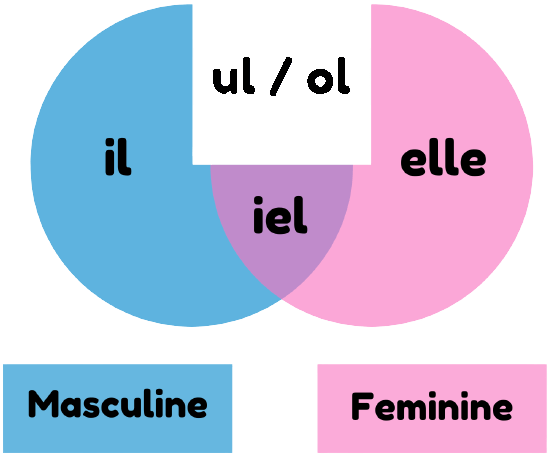Pronouns
Pronouns are words used to refer to people without needing to use their name. In english, the pronouns he, him, his and she, her, hers, always indicate the person's gender. So for trans people, non-binary people or other people who have a gender expression that differs from the norm, prounouns can be an important tool to affirm their gender identity and respect them as humans.
Pronouns, like the genders they refer to, are social constructs. Different cultures have different gender systems, and different pronouns. In some languages such as English, there is also a third pronoun, "they" which can be used for groups of people, but also for individuals, either because their gender is unknow, or because they are non-binary.
What pronouns exist?
In english, the pronouns he and she are very well known, as well as they. There are also other pronouns, called neopronouns, which allow us to refer to people without indicating their gender, for example:
- Xe/xim
- Ze/zir
- Ey/em
- and many others...
Some people do not have a preference for which pronoun(s) are used, it is therefore possible to use any pronoun to refer to them. It is also possible for a person to use several different pronouns.
Diagram (french)
A simple diagram of french pronouns to explain a simple subject:

In french, the traditional pronouns il (he) and elle (she) always indicate a person's gender. So, new and less-known pronouns, such as iel have been created to provide a gender-neutral option, often employed by non-binary people.